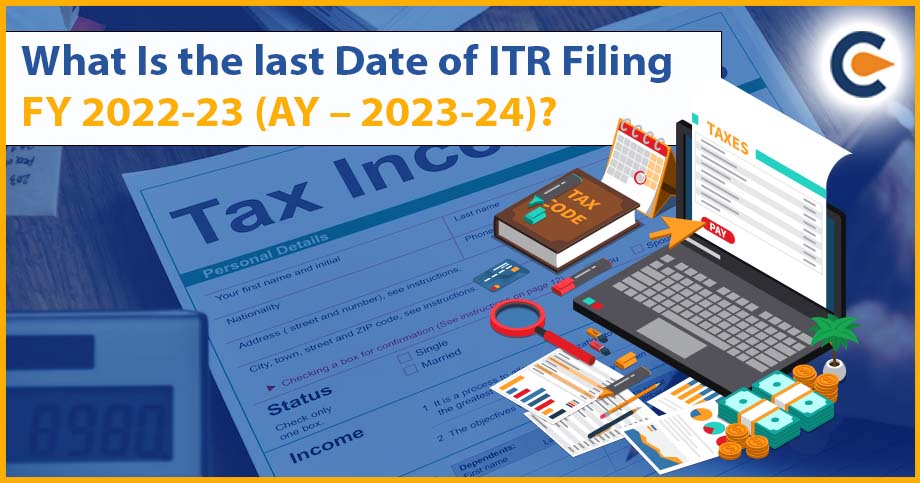With a three-tier federal structure made up of the Union Government, the State Governments, and the Urban/Rural Local Bodies, India has a well-developed tax system. For many of us, income tax is the most intimidating and difficult subject to comprehend. Understanding how taxes are calculated and the numerous phrases used in connection with them is quite challenging. The income tax department[1] gives a variety of unique identification numbers to collect and manage tax collection from different incomes. An account number for tax deductions and collections (TAN) has ten (10) alphanumeric digits. A reference to the number must be made on every TDS return in accordance with the Section 203A Income Tax Act of 1961. The TAN number must be obtained by anybody who is in charge of withholding and collecting taxes. In this article, we are going to discuss TAN and the process of finding TAN Registration Number for a Company.
What is TAN?
An individual ten-digit alphanumeric number called a Tax Deduction and Collection Account Number, or TAN is given to individuals who are responsible for withholding or collecting Tax at Source, or TDS. For firms that deduct tax at source, registering for a TAN Number is crucial. Every assesses who is obliged to deduct TDS must apply for a TAN Number, which must be used in all TDS Returns, TDS Payments, and any communications with the Income Tax Department about TDS.
According to Section 203A Income Tax Act of 1961, Tax Deduction & Collection Account Number (TAN) quotation is required on all TDS returns and challans when depositing tax in a specified bank.
A penalty of INR 10,000 is applied if any individual’s TDS returns are not received for any other reason, if their TAN is not quoted, challans for TDS payments are not accepted, and if they fail to apply for TAN or do not use it in the required paperwork. The firm must file TDS returns on a quarterly basis after obtaining TAN.
According to the Income Tax Rules, a property buyer must deduct TDS at a rate of 1 per cent of the property if the value of the property is greater than INR 50 lakh. The property buyer does not need to have a TAN to do this.
What is the structure of TAN?
The ten-digit alphanumeric number known as the TAN has a distinct structure. The following is an explanation of TAN’s structure:
- The first four numbers are letters, the first three of which identify the country from where the TAN was obtained. The company or person applying for the TAN is identified by their initials in the fourth letter.
- The middle five numerical digits are system-generated, unique numbers that make up the next five numbers.
- The last digit is a letter; the final letter is a special letter produced by the system.
Who provides TAN?
Based on the applications that businesses or employers submit, the Income Tax Department distributes TAN. The National Securities Depository Limited (NSDL)-Tax Information Network (TIN) website or facilitation centres must be used to submit the application.
Who all are can apply for TAN Registration?
Following is the list of individuals/ companies who are required to have TAN registration:
- Basically, everybody who is receiving a commission, salary, or other payment must have a TAN.
- A TAN number is required by the federal, state, and local governments.
- Statutory and autonomous organisations require TAN numbers.
- Business needs a TAN Number.
- A company’s branch or division needs a TAN.
- Karta and other Individual/Hindu Undivided Families require TAN.
- Individual Business Branches
- Firms, groups of people, and trusts also require TAN numbers.
Functions of Tax Deduction & Collection Account Number
Here the author has talked about the function of TAN registration:
- Compliance: TAN is mandatory for individuals and organisations to comply with the Income Tax laws of India. It is mandatory to quote the TAN number on all tax deduction and deposit forms, challans and statements.
- Tracking: TAN helps in tracking the tax deductions made by the deductor. It helps the Income Tax Department to match the tax deducted at the source with the tax paid by the individual or entity.
- Verification:TAN helps in verifying the authenticity of the deductor. It can be checked on the Income Tax Department’s website to confirm whether the TAN is valid or not.
- Penalty: If TAN is not quoted or if a wrong TAN is quoted, the deductor is liable to pay a penalty of INR 10,000 under Section 272B Income Tax Act of 1961.
- Correspondence: TAN is also used for all correspondence between the deductor and the Income Tax Department. It acts as a unique identifier for all communications and transactions related to tax deductions and deposits.
Uses of Tax Deduction & Collection Account Number
Following are the uses of Tax Deduction & Collection Account Number:
- To claim tax deductions and credits: A Tax Deduction & Collection Account Number (TAN) is required to claim various deductions and credits on your income tax return. These may include deductions for charitable donations, home mortgage interest, and business expenses.
- To file tax returns:A TAN is required for businesses and individuals who are required to file tax returns. Without a TAN, the tax return cannot be processed.
- To make tax payments: TAN is used to make tax payments and to ensure that the payments are credited to the correct account.
- To communicate with the tax department:TAN is used as a reference number when communicating with the tax department, such as when requesting information or clarifications on a tax return.
- To track tax compliance: TAN is used by the tax department to track compliance with tax laws and regulations and to identify and pursue tax evaders.
- To claim refunds:TAN is used to claim refunds of taxes paid in excess, such as when a business overpays its taxes.
- To participate in e-filing:Many tax authorities now require that tax returns be filed electronically, and a TAN is required to participate in e-filing.
People responsible for applying Tax Deduction & Collection Account Number
- Taxpayers – Individuals and businesses who are responsible for filing their own taxes and claiming deductions.
- Tax agents or accountants -Professionals who assist taxpayers in filing their taxes and help them claim deductions.
- Employers -Companies that are responsible for withholding taxes from their employees’ salaries and filing returns on their behalf.
- Banks and other financial institutions -These organisations may be required to provide information about taxpayers’ income to the government and assist in the application process for Tax Deduction & Collection Account Numbers.
- Government officials – Employees of the government, such as tax officials and revenue department employees, may be responsible for issuing Tax Deduction & Collection Account Numbers to taxpayers.
- Non-profit organisations – Some organisations may also be eligible for tax deductions and may be responsible for applying for a Tax Deduction & Collection Account Number.
How to find the tan registration number?
To know the TAN registration details, kindly follow the following steps:
- You need to go to the e-Filing portal;
- Click on Know TAN Details;
- In the case if you have entered the name of the deductor in Step two (2), you will see a list of all records that match that name;
- Click on the required name of the deductorfrom the TAN Details table, and you will be able to find the deductor’s individual TAN Details (this will include their basic details and AO details).
Advantages of TAN Registration
Some advantages of having a TAN registration include the following:
- Legal requirement: TAN is mandatory for businesses and individuals who are required to deduct or collect taxes on behalf of the government. Failure to obtain a TAN may result in penalties;
- Easy identification: TAN serves as a unique identification number for businesses and individuals for the purpose of tax deduction or collection;
- Facilitation of tax compliance:TAN helps facilitate compliance with tax laws by enabling companies and individuals to easily track and report taxes that have been deducted or collected;
- Avoid late fee or penalty: TAN is required for tax deductors to be filed TDS/TCS returns; without that, a penalty or late fee will be levied;
- Maintaining records: TAN is also required for keeping records of TDS/TCS; it is necessary to quote in all TDS/TCS related certificates (Form 16, Form 16A, etc.).
Disadvantages of Tax Deduction & Collection Account Numbers
While Tax Deduction & Collection Account Number (TAN) provides several benefits, there are also some potential drawbacks to consider, and they are mentioned below:
- Compliance burden: Obtaining and maintaining a TAN can be a time-consuming and complex process, especially for businesses and individuals who need to become more familiar with tax laws and regulations;
- Penalties for non-compliance:Failure to obtain a TAN or comply with TAN-related regulations can result in penalties, such as fines or imprisonment;
- Extra cost:there can be additional costs associated with the TAN registration process, and also the need to maintain records to avoid penalties;
- Limited to India:TAN is applicable only in India and not recognised in other countries, so for foreign transactions, it will not be considered as a proof of compliance;
- Complex process: The registration process is difficult to navigate, particularly for small and medium-sized enterprises (SMEs) who may need additional help navigating the process;
Under what conditions can my TAN be rejected?
Here the author has talked about all those conditions where your TAN registrations can be rejected:
- The Form 49B is either incomplete or incorrectly filled out by you;
- In the case where your name is already has the TAN registration or the name of your business already has a TAN;
- In the case where your payment wasn’t handled correctly.
Penalty for not applying Tax Deduction & Collection Account Number
In India, a Tax Deduction & Collection Account Number (TAN) is required to be quoted in various forms and documents related to a tax deduction or collection. If a person fails to apply for TAN or quotes an incorrect TAN, they may be subject to a penalty. As per the income tax rules, the penalty for not applying for a TAN or for quoting an incorrect TAN is INR 10,000. This penalty is imposed under section 272B of the Income Tax Act, 1961.
Conclusion
TAN, which is also known as Tax Deduction and Collection Account Number. It is a 10-digit alphanumeric number; the first three (3) letters of TAN reflect the jurisdiction code, the following fourth (4) letters are the initials of the taxpayer, and the next five digits and the last digit is an alphabet, which makes the TAN different.
Under the provisions of the Income Tax Act of 1961, TAN registration is compulsory for all those individuals and companies who are allowed to pay or deduct tax on cash payments by the Indian Income Tax Department. It is mandatory to include the TAN registration details in all TDS returns and Challans while paying tax under the Section 203A of the Income Tax Department.
Read our Article:The Benefits Of Registering Your Will With A Trust Company










